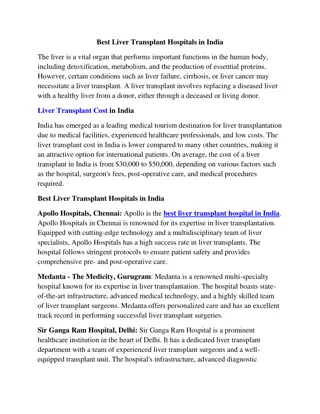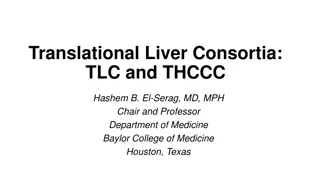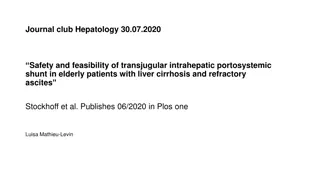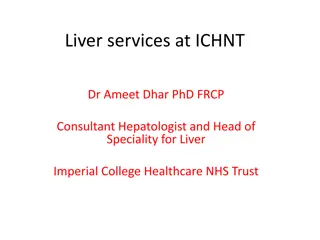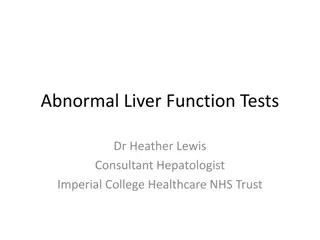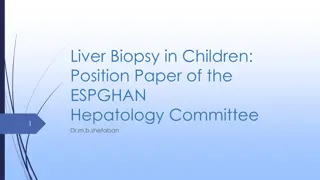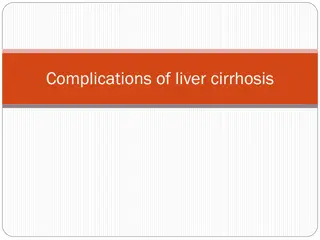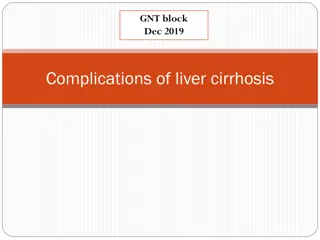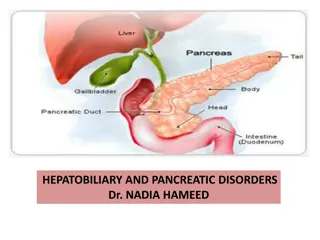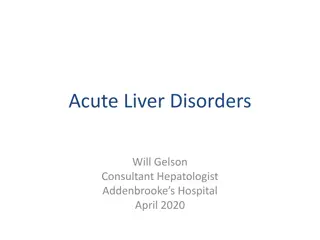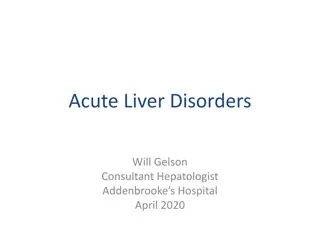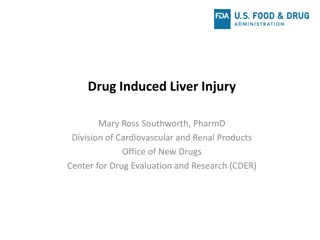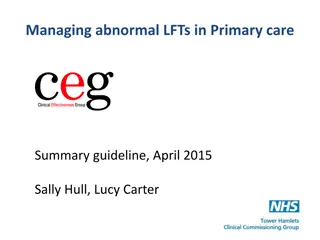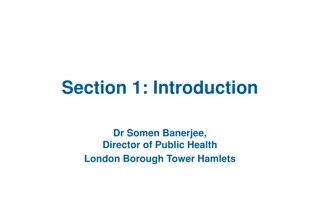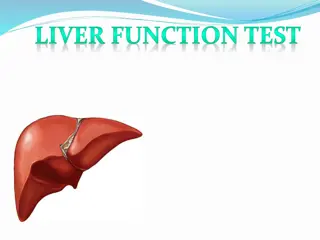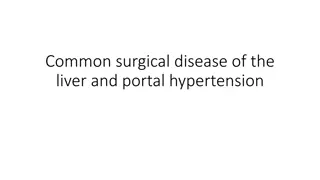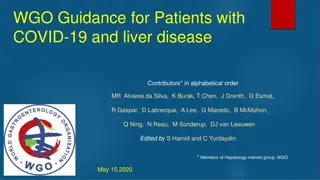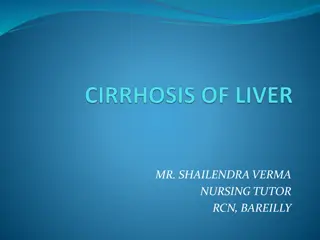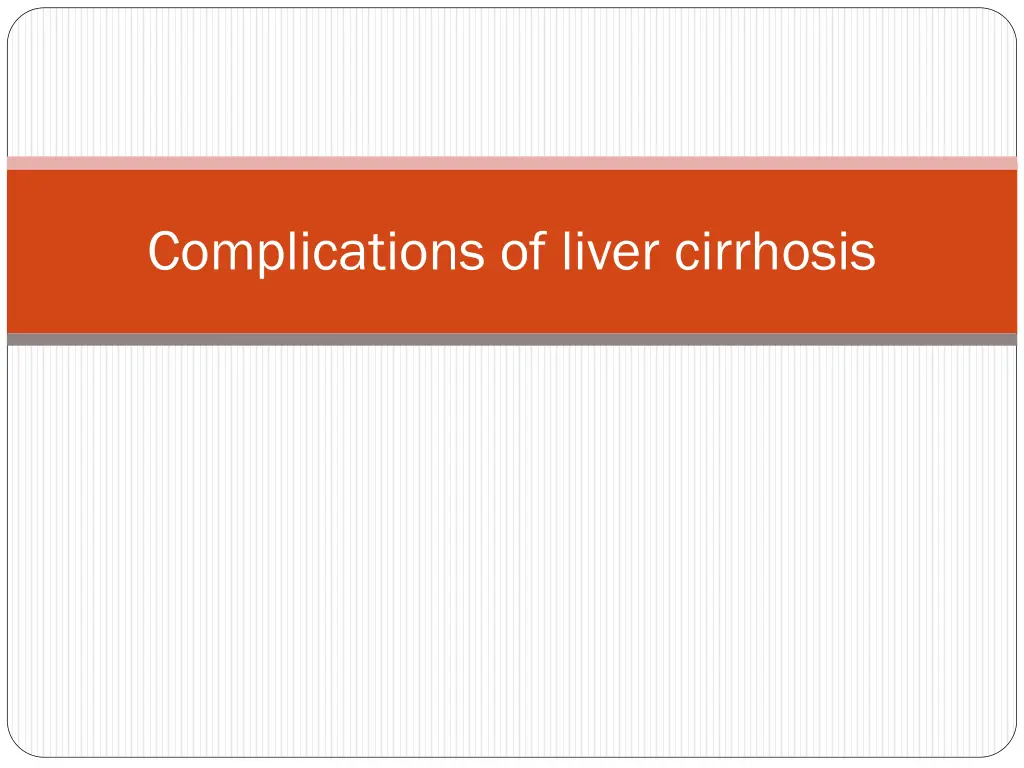
Understanding Complications of Liver Cirrhosis
Explore the major complications of liver cirrhosis, including portal hypertension, ascites, spontaneous bacterial peritonitis, variceal bleeding, hepatic encephalopathy, and more. Learn about the pathological mechanisms, clinical features, and pathological findings associated with these complications.
Download Presentation

Please find below an Image/Link to download the presentation.
The content on the website is provided AS IS for your information and personal use only. It may not be sold, licensed, or shared on other websites without obtaining consent from the author. If you encounter any issues during the download, it is possible that the publisher has removed the file from their server.
You are allowed to download the files provided on this website for personal or commercial use, subject to the condition that they are used lawfully. All files are the property of their respective owners.
The content on the website is provided AS IS for your information and personal use only. It may not be sold, licensed, or shared on other websites without obtaining consent from the author.
E N D
Presentation Transcript
Complications of liver cirrhosis Recognize the major complications of cirrhosis. Understand the pathological mechanisms underlying the occurrence of the complications. Recognize the clinical features inherent to the above mentioned complications. Describe the pathological findings of the different complications.
. Complications of liver cirrhosis Portal hypertension. Ascites. Spontaneous bacterial peritonitis. Portosystemic venous shunts: Variceal bleeding. Congestive splenomegaly Hepatorenal syndrome. Hepatic encephalopathy. Hepatocellular carcinoma.
Complications of liver cirrhosis PORTAL HYPERTENSION : Resistance to blood flow: prehepatic, intrahepatic, and posthepatic The dominant intrahepatic cause is cirrhosis, accounting for most cases of portal hypertension
Complications of liver cirrhosis Instead of returning directly to the heart, venous blood from the GI tract is delivered to the liver via the portal vein before reaching the inferior vena cava.
Complications of liver cirrhosis This circulatory pattern is responsible for the first-pass effect in which drugs and other materials absorbed in the intestines are processed by the liver before entering the systemic circulation..
Complications of liver cirrhosis Portosystemic venous shunts: Esophageal varices. Massive hematemesis Hemorrhoides Periumbilical collaterals
Complications of liver cirrhosis Pathogenesis Portal hypertension results in the development of collateral channels at sites where the portal and caval systems communicate. Although these collateral veins allow some drainage to occur, they lead to development of a congested subepithelial and submucosal venous plexus within the distal esophagus. (varices): 90% of cirrhotic patients
Complications of liver cirrhosis Morphology. Varices can be detected by venogram : tortuous dilated veins lying primarily within the submucosa of the distal esophagus and proximal stomach. Venous channels directly beneath the esophageal epithelium may also become massively dilated. Varices may not be grossly obvious in surgical or postmortem specimens, because they collapse in the absence of blood flow . Variceal rupture results in hemorrhage into the lumen or esophageal wall, in which case the overlying mucosa appears ulcerated and necrotic. If rupture has occurred in the past, venous thrombosis, inflammation, and evidence of prior therapy may also be present.
Complications of liver cirrhosis Inflammatory erosion of thinned overlying mucosa Increased tension in progressively dilated veins Increased vascular hydrostatic pressure associated with vomiting are likely to contribute
Complications of liver cirrhosis Clinical features: Asymptomatic or rupture- massive hematemesis.
Complications of liver cirrhosis Medical emergency that is treated by any of several methods: sclerotherapy Endoscopic balloon tamponade Endoscopic rubber band ligation
Complications of liver cirrhosis Half of patients die from the first bleeding episode either as a direct consequence of hemorrhage or following hepatic coma triggered by hypovolemic shock. Additional 50% within 1 year. Each episode has a similar rate of mortality. Over half of deaths among individuals with advanced cirrhosis result from variceal rupture.
Complications of liver cirrhosis Ascites is the accumulation of excess fluid in the peritoneal cavity: In 85% of cases, ascites is caused by cirrhosis Serous: less than 3 gm/dL of protein Spontaneous bacterial peritonitis
Complications of liver cirrhosis Splenomegaly : Long-standing congestion may cause congestive splenomegaly. (1000 gm) Splenomegaly : Hematologic abnormalities attributable to hypersplenism, such as thrombocytopenia or pancytopenia.
Complications of liver cirrhosis Hepatorenal syndrome: Appearance of renal failure in individuals with severe chronic liver disease --- no intrinsic morphologic or functional causes for the renal failure. The incidence of this syndrome is about 8% per year among patients who have cirrhosis and ascites
Complications of liver cirrhosis Decreased renal perfusion pressure . Activation of the renal sympathetic nervous system with vasoconstriction of the afferent renal arterioles Increased synthesis of renal vasoactive mediators, that decrease glomerular filtration.
Complications of liver cirrhosis Hepatic encephalopathy : Sever loss of hepatocellular function Shunting of the blood. Elevated blood ammonia level Clinical manifestations
Complications of liver cirrhosis Hepatocellular Carcinoma
Complications of liver cirrhosis JAUNDICE AND CHOLESTASIS: Causes of jaundice Bilirubin overproduction, hepatitis, and obstruction of the flow of bile. Jaundice and icterus Cholestasis, characterized by systemic retention of not only bilirubin but also other solutes eliminated in bile.


